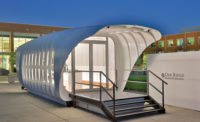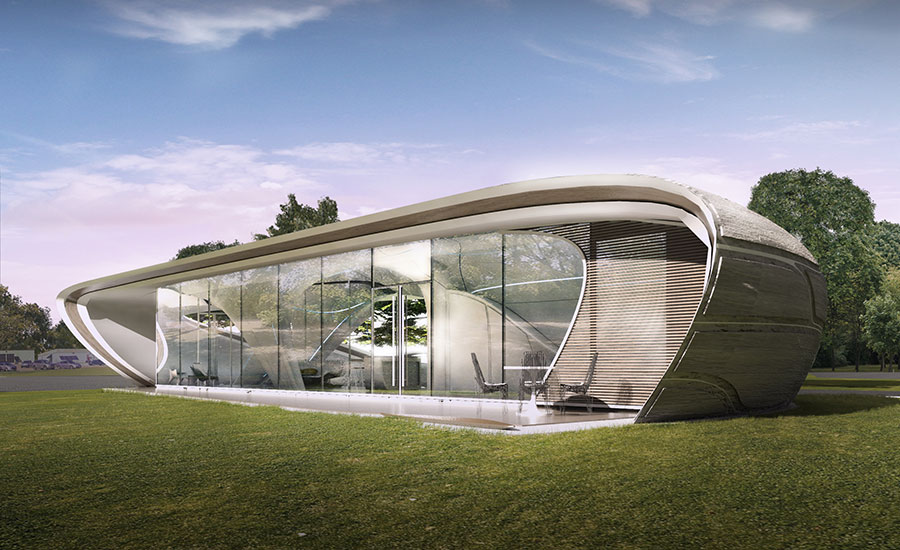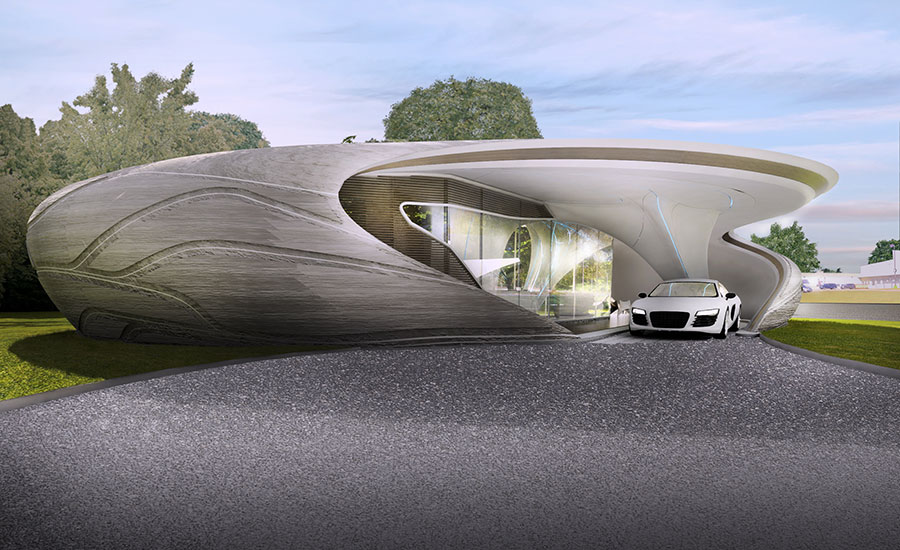Curvaceous 3D-Printed House Advances Toward Construction

WATG’s scheme for the 3D-printed house has been dubbed “Curve Appeal” for its bowed forms.
Photo © WATG

The building’s exterior surface will consist of glass-fiber reinforced concrete.
Photo © WATG

Interior walls surfaces will be made of a gypsum-based material.
Photo © WATG

The exterior wall modules will be a composite of several materials.
Photo © Branch Technology

Branch has used the same robot-controlled cellular printing process on a number of different projects, including a pavilion that SHoP developed for the 2016 edition of Design Miami.
Photo © Branch Technology





The urban studio of architecture firm WATG and 3D-fabrication company Branch Technology have completed structural testing for what they say will be the world’s first “freeform” printed house. Completion of this validation process, performed in accordance with ASTM International standards, moves the 1,000-square foot demonstration project one step closer to reality. The design and fabrication team, which includes structural consultants Thornton Tomasetti and mechanical engineers Interface, expects to complete construction on a site at Chattanooga State Community College in Tennessee by early 2019.
The WATG scheme for the house, called “Curve Appeal” for its sinuous contours, was selected from 1,300 entries to a 2016 competition sponsored by Chattanooga-based Branch. The contest’s aim was to showcase the company’s 3D-printing technology, which differs from the usual additive manufacturing process. Instead of depositing layer on top of layer of printing medium, the company’s robot-controlled machines continuously extrude material in a cellular fashion, explains Platt Boyd, Branch CEO. “The printer almost grows the structure,” says Chris Hurst, design director of WATG’s Chicago office.
Previous Branch projects have included furniture, large-scale sculpture, architectural components, and pavilions. It fabricated a pavilion that SHoP Architects developed for the 2016 edition of Design Miami. Curve Appeal will be the company’s first complete building.
The house will sit on a conventional slab on grade but components such as its building envelope, interior partitions, and structural columns will be fabricated offsite starting later this year. The exterior wall modules, which will be various sizes, are to include the cellular matrix printed of carbon-fiber-reinforced ABS (Acrylonitrile butadiene styrene) plastic with glass-fiber reinforced concrete on the exterior and a gypsum-based finish on the interior. According to the project team, each composite wall section will have a compressive strength three to four times that of standard wood stud construction. In addition to being structurally robust, the assembly, which will also incorporate spray-foam insulation, will achieve R-values as high as 50. These thermal properties, along with features such as flexible film photovoltaic panels on the roof, are intended to help Curve Appeal achieve net-zero energy.
Since grants, in-kind donations, and sponsorships from manufacturers and industry organizations are helping realize the project, Boyd is unable to provide a hard cost. But he predicts that in the not so distant future a house like Curve Appeal could be built within a conventional construction budget. “Since this is the first of its kind,” he says, “it is not going to be the cheapest thing out there.”









